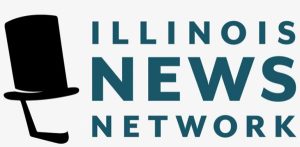


We are a Group Insurance and Employee Benefits Consulting Firm providing advice, advocacy and solutions/answers to employers and organizations in the Greater Chicago area and throughout the state of Illinois. Having opened our doors in 1995, Castle Group Health (HealthInsure.com) has grown exponentially into one of Illinois most prominent, trusted source for employee benefits, as well as HR services. Out of need for clients, we have expanded into 26 states. See states we work in.
You can go anywhere for quotes. We believe being educated and supported by a group health expert, like Castle Group Health, will help you save the most money on employee benefits. A good health insurance agent will inform you, not sell you!
It could be a turning point for your company. In a call or zoom meeting, we’ll discuss what is important to you and your employees, and what obstacles may be holding you back from achieving your goals. After our analysis, we’ll recommend and thoroughly explain your best options (and why) that are specific to your needs and essential to the overall success of your company.
It would be our pleasure and honor to serve your benefit needs. Surveys often show that one of the top reasons (besides costs) for switching benefits brokers is due lack of communication. While we may save our clients money on their benefits programs, at Castle Group Health we take pride in our ability to retain the majority of our clients long-term by returning calls promptly and by doing as much as we can to reduce the workload for you and your HR team.


Mark Gurda has been developing, managing & administering health plans for small employers in the Chicago area more than thirty years. He is a true small group insurance expert. He has a strong handle on the issues and challenges small employers face (affordability, regulations, to name a few) in today’s insurance and healthcare landscape and provides real solutions to help clients overcome them, so they can focus on other tasks.
Mark started Castle Group Health when the internet was just about to take off and he quickly launched HealthInsure.com, which received more than a million visitors in the first decade alone. He often tells clients he was on the internet helping clients with insurance before Al Gore even knew what it was. But seriously…Mark cares deeply about the future of healthcare and has written many articles and given many interviews on the topic, including as author of MrHealthInsurance.com, a blog on healthcare that Mark simultaneously managed as a way to inform clients and the public in general on important health insurance and healthcare issues of the day.



This is applicable for 2016-2017 members of Blue Cross who have the Blue Choice Options (BCO) plan through an employer plan. This is not applicable to those that have Blue Choice Preferred PPO (BCE), which is the only network offered to individual plan members….
The Federal Government denied the suspension of the $31mm payment to the federal risk adjustment program. As a result, the State of Illinois has petitioned the court to take over Land of Lincoln health due to financial instability…
Vermont Senator Bernie Sanders wants to reform the Affordable Care Act, though not in the way that many were hoping for….
In my commentary last week on the delay of the 2014 employer penalties, I indicated that I expected additional changes in the rules and regulations to follow. So here is what has happened since the Employer Mandate delay….
Today, Justice Roberts joined the majority, upholding the key elements of ObamaCare. I view this decision as the best possible outcome for business and individuals in a democracy…
Founded in 1995, HealthInsure.com is the face of Castle Group Health, a well known leader in the small to medium size group employer benefits industry. We educate businesses on group health options and strategies that challenge high premiums and deductibles, and also help employers to offset costs with improved HR processes and reduced administrative overhead.
Copyright © 2025 All Rights Reserved.
You are now leaving the website for Castle Group Health and HealthInsure.com and visiting our sister company CastleHR.com to learn more about our benefit and HR technology. This link opens in a new tab, so you’ll be able to switch back to our main website at any time to continue exploring all of our services and products.
Continue to CastleHR.com
What is a fully-funded health plan?
A fully-funded health plan is one where the insurance carrier assumes all the risk in exchange for a monthly premium. The carrier pays all claims on the plan, and services the plan’s administration. The main advantage of a fully-funded plan is the employer knows exactly what the plan is going to cost them. The downside of a fully-funded health plan is when benefits go unused, the employer does not get any money back.
What is a partially-funded health plan?
Partially-Funded Plans (aka Level-Funded) are a variation of a Self-Funding and allows small employers to take advantage of all the cost saving and benefit design features of a self-insured plan, however, they share the risk with one of our top national carriers. The premiums for shared funding plans are generally much lower than fully insured plans. An employer may save even more by implementing wellness programs into the benefit strategy.
Also known as Dental and Vision Savings Plans, this option offers reduced rates on dental and vision services through a membership program, rather than traditional insurance coverage. Members pay an annual fee and receive discounted rates from participating dentists and eyecare providers. These plans differ from insurance in that there are no claim forms, deductibles, or annual maximums. These plans are a form of savings program, not insurance, and can be used as a standalone option or to supplement an existing insurance plan.
Services include eye exams, eyeglasses, and contact lenses, dental cleanings, fillings, crowns and other dental services at a network of participating providers.
Following are employee benefit plan options designed to save both employers and employees money on healthcare and premiums. The plans are similar in some ways, but also vary, each having unique advantages and savings opportunities. The interface feature of our all-in-one online benefits management system makes it extremely easy to add and manage these programs to your benefit offering, including administration and compliance.
A Health Savings Account combines a high deductible, lower premium group health insurance plan (HDHP) with an employee owned, interest earning savings account. Both employer and employee can contribute, with pre-taxed dollars, to the savings account. This effectively reduces the employee’s taxable income as well. Tax-free withdrawals are used directly by employee to help fund the deductible and other qualified medical expenses (including prescription, dental, and vision related healthcare). Any unused contributions can roll-over to the next year, and the HSA is portable and stays with the individual, even when that person changes employers. For all qualified medical expenses see See IRS Publication 502.
A Health Reimbursement Arrangement pairs a high deductible, low premium health insurance plan (HDHP) with a tax-favored savings account to cover the high deductible. The HRA is funded by the employer and money is distributed only when a claim is incurred, typically for co-pays and other qualified expenses submitted by the employee, prior to the deductible being met. HRA contributions are not considered income to the individual. This type of arrangement helps both the individual and the business owner. The individual gets financial assistance paying medical bills and the employer only pays money when a claim is incurred, plus gets a business deduction.
A Flexible Spending Account is a tax-favored savings account funded solely by the employee through regular pre-tax payroll deductions. The funds can be withdrawn, tax-free, to pay for eligible medical, dental, vision, prescription and dependent daycare expenses. Employees elect how much they want withdrawn from each pay period. By participating in a FSA, an employee always has cash to pay for these expenses, and as an added benefit, their taxable income is reduced which also increases the percentage of pay they take home. One disadvantage of using an FSA is that funds not used by the end of the plan year are lost to the employee, known as the “use it or lost it’ rule. In 2021, the maximum allowed per employee in a medical flexible spending account is $2750 per plan year.
Employer-provided disability insurance is often a good starting point, but it may not be enough to cover all your expenses if you become disabled. It’s crucial to assess your individual needs and potentially supplement your employer’s coverage with a private disability insurance policy.
Short Term Disability
During the time you are unable to work due to a qualifying disability (illness or injury), STD generally allows for income payments to begin after about a two-week waiting period and will continue until you recover or max out the benefits–usually anywhere between one month to two years, depending on the policy.
Long Term Disability
During the time you are unable to work due to a qualifying disability (illness or injury), LTD generally allows for income payments to begin after about a 90-day waiting period. However, it could be much longer depending on the policy. The policy will pay the benefits far longer than STD–for a few years, up to age 65, or even for life.
The public health insurance Marketplace (also referred to as an “Exchange”) is where you can purchase health insurance (also known as Obama Care) for you and your family. A plan from the marketplace is considered a comprehensive major medical plan and also contains the essential health benefits (see below) as established under the Affordable Care Act (ACA) law.
The essential health benefits are as follows:
An HMO offers lower premiums and a significant savings on routine and preventative healthcare. However, this type of health plan requires you to appoint a primary care physician and to use doctors and facilities that are affiliated with the HMO. Thus, if you use healthcare service providers outside of the HMO, there is a good chance those charges won’t be covered by your policy. But, the great thing about an HMO is that the only charges you incur, outside of your premiums, are co-pays for doctor’s visits and other services such as procedures and prescriptions.
A PPO will save you money on services if you use the preferred providers within the network. Keep in mind that deductibles must be met on this plan before some services will be covered. The good thing about a PPO is they generally will allow a certain amount of services annually outside of the deductible with a small co-pay, and most often the PPO has a large network with quality care providers and excellent prescription drug coverage.
POS plans combine features of HMOs and PPOs. Most POS plans require members to choose a primary care physician from within the POS network, but allow them to use out-of-network specialists with a referral from a primary care physician. Co-payments will be higher for out-of-network services.
An HSA is a tax-advantaged bank account tied to certain high-deductible health plans. It allows you to use tax free dollars to pay for allowable health expenses, such as copays, prescription drug costs and more.
Most insurers include wellness benefits in their comprehensive coverage, designed to improve lives and keep members healthy. Your plan from the Marketplace will generally include services like preventative screenings, free or discounted gym memberships, diet advice, disease management, telehealth, and much more.
Individual dental plans are inexpensive and can contribute greatly in promoting overall good health. They can range from a PPO or HMO to Pre-Paid, Fee-for-Service, and Discount on a variety of diagnostic and preventative care services including cleanings, exams, x-rays, fillings, orthodontia for children, and emergency care while traveling.
A PPO Dental Plan will save you the most money if you use providers within the network, and a HMO requires you use providers and the network and appoint a primary dentist.
Individual vision plans are similar to individual dental policies, as they are inexpensive and save you money on routine eye care, such as exams, eyeglass frames and lenses, contacts, and even offer big discounts on procedures like LASIK. Plans often work similar to a PPO or HMO, having a small copay and saving you the most money if you use providers within a specified network.
An HMO offers lower premiums and a significant savings on routine and preventative healthcare. However, this type of health plan requires you to appoint a primary care physician and to use doctors and facilities that are affiliated with the HMO. Thus, if you use healthcare service providers outside of the HMO, there is a good chance those charges won’t be covered by your policy. But, the great thing about an HMO is that the only charges you incur, outside of your premiums, are co-pays for doctor’s visits and other services such as procedures and prescriptions.
A PPO will save you money on services if you use the preferred providers within the network. Keep in mind that deductibles must be met on this plan before some services will be covered. The good thing about a PPO is they generally will allow a certain amount of services annually outside of the deductible with a small co-pay, and most often the PPO has a large network with quality care providers and excellent prescription drug coverage.
An HSA is a tax-advantaged bank account tied to certain high-deductible health plans. It allows you to use tax free dollars to pay for allowable health expenses, such as copays, prescription drug costs and more.
Most insurers include wellness benefits in their comprehensive coverage, designed to improve lives and keep members healthy. Your plan will generally include services like preventative screenings, free or discounted gym memberships, diet advice, disease management, telehealth, and much more.